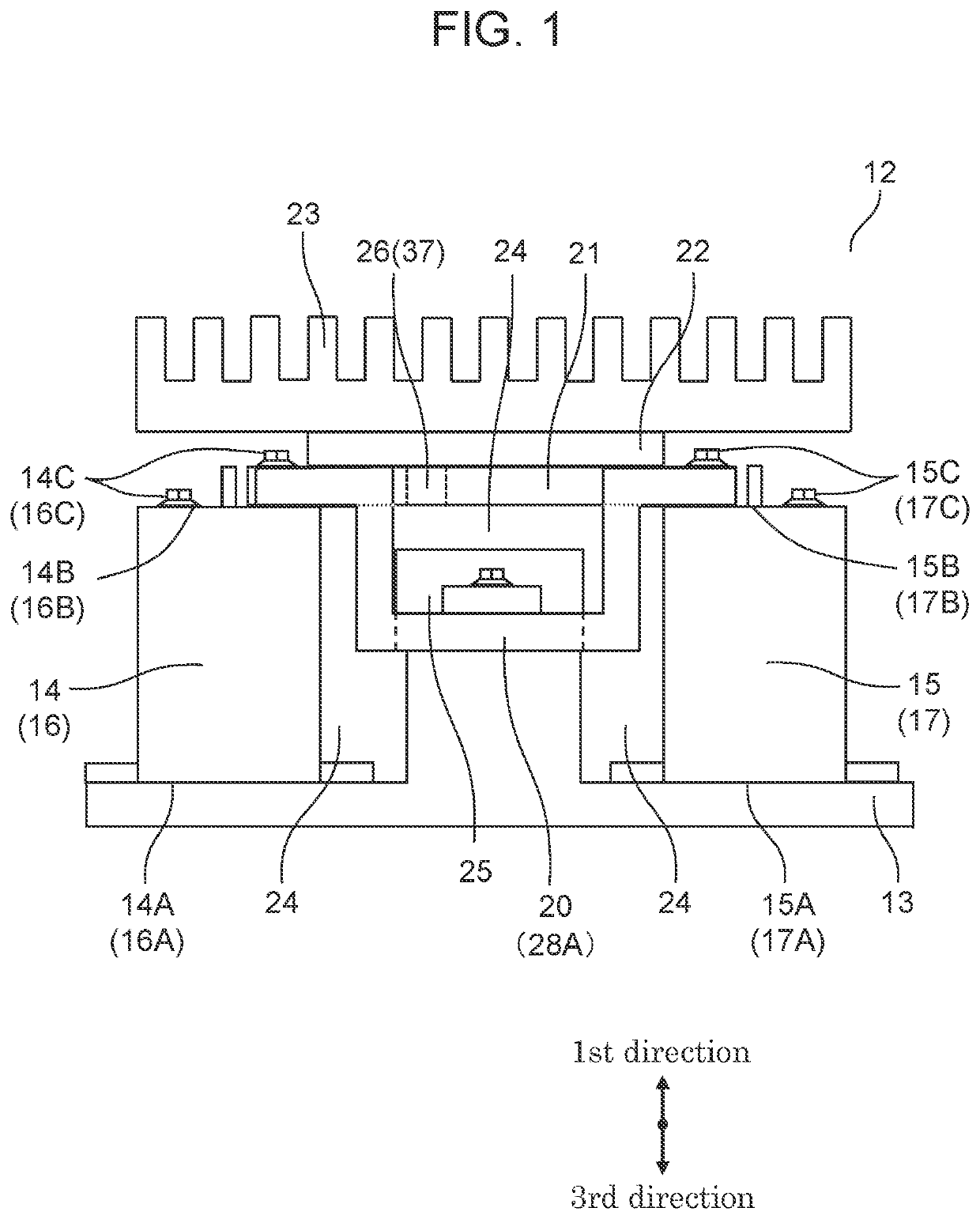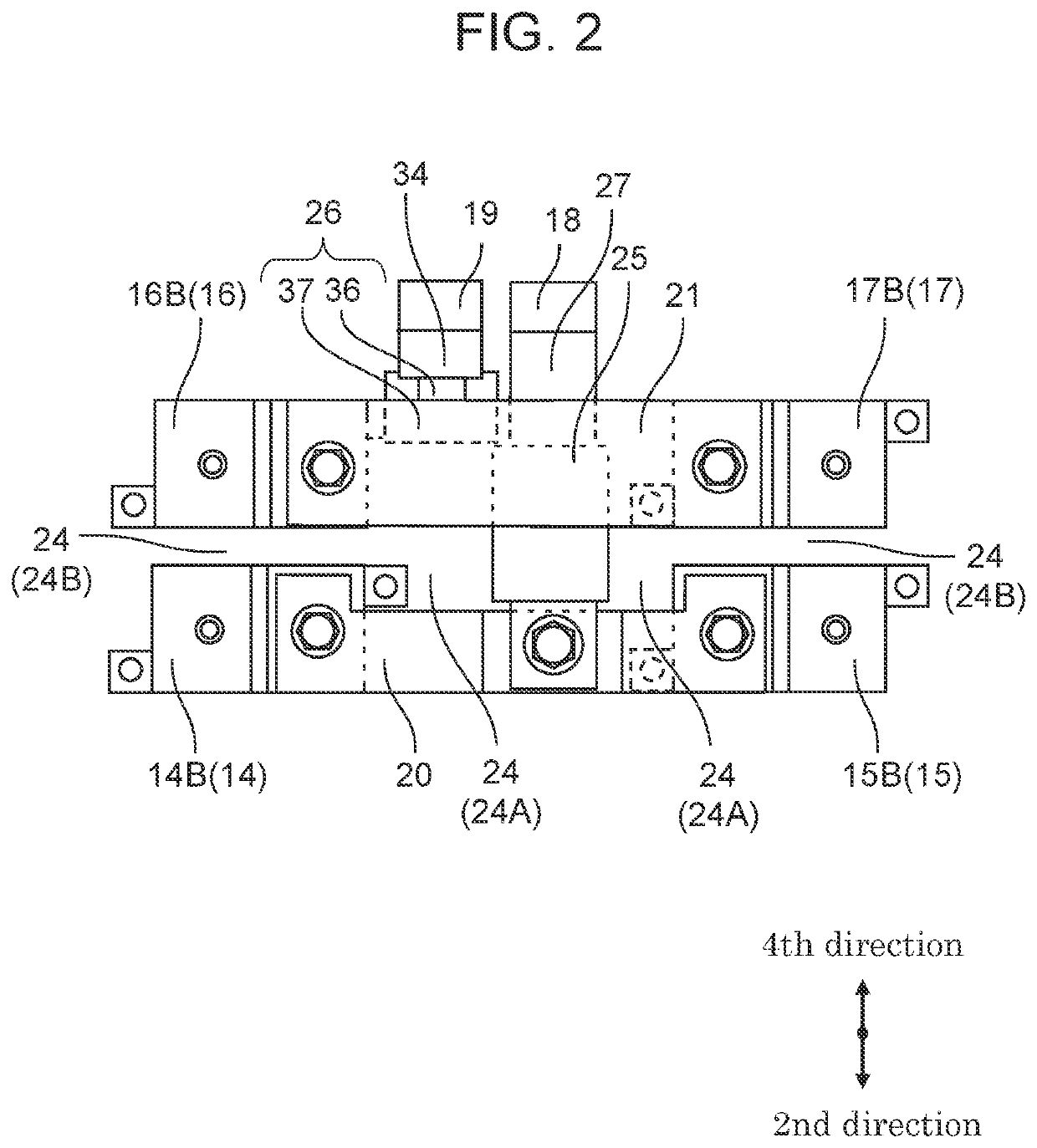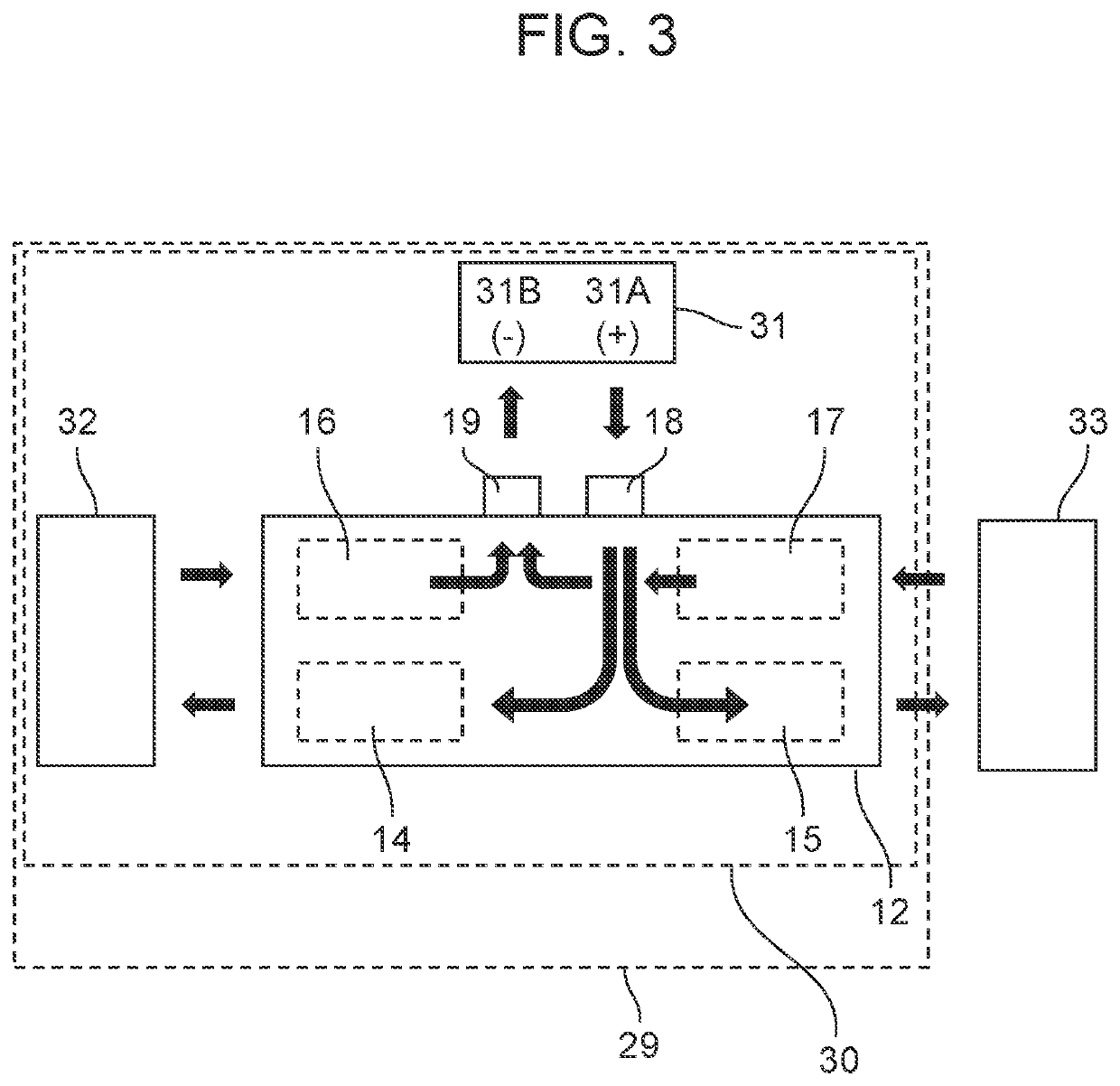Relay module
a relay module and relay technology, applied in the field of relay modules, can solve the problems of reducing operational reliability, relay module b>1/b> failing to detect an electric current with high accuracy, and inability to operate, so as to improve the operational reliability of the relay module, improve and improve the effect of the temperature of the detection conductor
- Summary
- Abstract
- Description
- Claims
- Application Information
AI Technical Summary
Benefits of technology
Problems solved by technology
Method used
Image
Examples
Embodiment Construction
[0019]Hereinafter, an exemplary embodiment of the present disclosure will be described with the Drawings.
[0020]In the present exemplary embodiment, the upward direction is referred to as a first direction, the horizontal direction is referred to as a second direction, and the downward direction is referred to as a third direction.
EXEMPLARY EMBODIMENT
[0021]FIG. 1 is an external side view illustrating the configuration of a relay module according to an exemplary embodiment of the present disclosure. FIG. 2 is an external top view illustrating the configuration of the relay module according to the exemplary embodiment of the present disclosure.
[0022]Relay module 12 includes: base 13, first load relay 14, first charging relay 15, second load relay 16, second charging relay 17, first input terminal 18, second input terminal 19, interruption conductor 20, detection conductor 21, insulating layer 22, and heat dissipator 23. In FIG. 2, for convenience of description, base 13, insulating lay...
PUM
 Login to View More
Login to View More Abstract
Description
Claims
Application Information
 Login to View More
Login to View More - R&D
- Intellectual Property
- Life Sciences
- Materials
- Tech Scout
- Unparalleled Data Quality
- Higher Quality Content
- 60% Fewer Hallucinations
Browse by: Latest US Patents, China's latest patents, Technical Efficacy Thesaurus, Application Domain, Technology Topic, Popular Technical Reports.
© 2025 PatSnap. All rights reserved.Legal|Privacy policy|Modern Slavery Act Transparency Statement|Sitemap|About US| Contact US: help@patsnap.com



